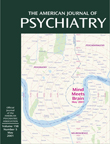Season of Birth Among Patients With Schizophrenia and Their Siblings: Evidence for the Procreational Habits Hypothesis
Abstract
OBJECTIVE: The birth rate of patients with schizophrenia during the winter and spring months is 5%–8% higher worldwide than the birth rate of the general population in the winter and spring months. Seasonal variation of births among the unaffected siblings of patients with schizophrenia has not been studied with adequate sample sizes. The authors investigated the seasonal variation of births among siblings of patients with schizophrenia in a large, nationwide, representative patient and sibling population. METHOD: Finnish patients with schizophrenia born from 1950 to 1969 (N=15,389) were identified from three nationwide health care registers. Unaffected siblings of these patients born in the same time period (N=37,819) were identified from the Finnish National Population Register. The seasonal variation of births among patients and siblings were examined by using a log-linear model. Explanatory variables were sex, year of birth categorized into four 5-year groups, and seasonal variation, which was analyzed by fitting a short Fourier series to the monthly birth data. RESULTS: The odds for having been born during the winter-spring months were slightly higher among both siblings and patients in all birth-year groups. However, patients born from 1955 to 1959 showed prominent seasonal variation of births, but the magnitude of this variation remained unchanged among siblings. CONCLUSIONS: Seasonal variation of births among patients with schizophrenia may consist of two factors: 1) parental procreational habits causing a slight excess of births of both patients and unaffected siblings during the winter-spring months and 2) irregular environmental factors that considerably increase the magnitude of the seasonal variation of births among patients but not their siblings.



